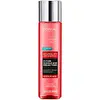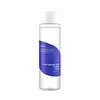What's inside
What's inside
 Key Ingredients
Key Ingredients

 Benefits
Benefits

 Concerns
Concerns

 Ingredients Side-by-side
Ingredients Side-by-side

Water
Skin ConditioningGlycolic Acid
BufferingHydroxyethylpiperazine Ethane Sulfonic Acid
BufferingGlycerin
HumectantSodium Hydroxide
BufferingCitric Acid
BufferingPentylene Glycol
Skin ConditioningAloe Barbadensis Leaf Juice
Skin ConditioningCitrullus Lanatus Fruit Extract
Skin ConditioningAllantoin
Skin ConditioningAscorbyl Glucoside
AntioxidantPanthenol
Skin ConditioningTocopherol
AntioxidantBis-PEG-18 Methyl Ether Dimethyl Silane
EmollientPotassium Sorbate
PreservativeSalicylic Acid
MaskingSodium Benzoate
MaskingWater, Glycolic Acid, Hydroxyethylpiperazine Ethane Sulfonic Acid, Glycerin, Sodium Hydroxide, Citric Acid, Pentylene Glycol, Aloe Barbadensis Leaf Juice, Citrullus Lanatus Fruit Extract, Allantoin, Ascorbyl Glucoside, Panthenol, Tocopherol, Bis-PEG-18 Methyl Ether Dimethyl Silane, Potassium Sorbate, Salicylic Acid, Sodium Benzoate
Water
Skin ConditioningPropylene Glycol
HumectantSodium Hyaluronate
HumectantTrehalose
HumectantSodium PCA
HumectantBiosaccharide Gum-1
HumectantGlycerin
HumectantHyaluronic Acid
HumectantCamellia Sinensis Leaf Extract
AntimicrobialGlycyrrhiza Glabra Root Extract
BleachingChamomilla Recutita Flower Extract
MaskingRosmarinus Officinalis Leaf Extract
AntimicrobialPolygonum Cuspidatum Root Extract
AntioxidantCentella Asiatica Extract
CleansingAloe Barbadensis Leaf Extract
EmollientAlthaea Rosea Root Extract
HumectantBetula Alba Juice
AstringentPortulaca Oleracea Extract
Skin ConditioningHydrolyzed Hyaluronic Acid
HumectantHydrolyzed Sodium Hyaluronate
Skin ConditioningSodium Hyaluronate Crosspolymer
HumectantBeta-Glucan
Skin ConditioningBetaine
HumectantPanthenol
Skin ConditioningCellulose Gum
Emulsion StabilisingPentylene Glycol
Skin ConditioningCaprylyl Glycol
EmollientButylene Glycol
HumectantEthylhexylglycerin
Skin ConditioningScutellaria Baicalensis Root Extract
AstringentWater, Propylene Glycol, Sodium Hyaluronate, Trehalose, Sodium PCA, Biosaccharide Gum-1, Glycerin, Hyaluronic Acid, Camellia Sinensis Leaf Extract, Glycyrrhiza Glabra Root Extract, Chamomilla Recutita Flower Extract, Rosmarinus Officinalis Leaf Extract, Polygonum Cuspidatum Root Extract, Centella Asiatica Extract, Aloe Barbadensis Leaf Extract, Althaea Rosea Root Extract, Betula Alba Juice, Portulaca Oleracea Extract, Hydrolyzed Hyaluronic Acid, Hydrolyzed Sodium Hyaluronate, Sodium Hyaluronate Crosspolymer, Beta-Glucan, Betaine, Panthenol, Cellulose Gum, Pentylene Glycol, Caprylyl Glycol, Butylene Glycol, Ethylhexylglycerin, Scutellaria Baicalensis Root Extract
 Reviews
Reviews

Ingredients Explained
These ingredients are found in both products.
Ingredients higher up in an ingredient list are typically present in a larger amount.
Glycerin is already naturally found in your skin. It helps moisturize and protect your skin.
A study from 2016 found glycerin to be more effective as a humectant than AHAs and hyaluronic acid.
As a humectant, it helps the skin stay hydrated by pulling moisture to your skin. The low molecular weight of glycerin allows it to pull moisture into the deeper layers of your skin.
Hydrated skin improves your skin barrier; Your skin barrier helps protect against irritants and bacteria.
Glycerin has also been found to have antimicrobial and antiviral properties. Due to these properties, glycerin is often used in wound and burn treatments.
In cosmetics, glycerin is usually derived from plants such as soybean or palm. However, it can also be sourced from animals, such as tallow or animal fat.
This ingredient is organic, colorless, odorless, and non-toxic.
Glycerin is the name for this ingredient in American English. British English uses Glycerol/Glycerine.
Learn more about GlycerinPanthenol is a common ingredient that helps hydrate and soothe the skin. It is found naturally in our skin and hair.
There are two forms of panthenol: D and L.
D-panthenol is also known as dexpanthenol. Most cosmetics use dexpanthenol or a mixture of D and L-panthenol.
Panthenol is famous due to its ability to go deeper into the skin's layers. Using this ingredient has numerous pros (and no cons):
Like hyaluronic acid, panthenol is a humectant. Humectants are able to bind and hold large amounts of water to keep skin hydrated.
This ingredient works well for wound healing. It works by increasing tissue in the wound and helps close open wounds.
Once oxidized, panthenol converts to pantothenic acid. Panthothenic acid is found in all living cells.
This ingredient is also referred to as pro-vitamin B5.
Learn more about PanthenolPentylene glycol is typically used within a product to thicken it. It also adds a smooth, soft, and moisturizing feel to the product. It is naturally found in plants such as sugar beets.
The hydrophilic trait of Pentylene Glycol makes it a humectant. As a humectant, Pentylene Glycol helps draw moisture from the air to your skin. This can help keep your skin hydrated.
This property also makes Pentylene Glycol a great texture enhancer. It can also help thicken or stabilize a product.
Pentylene Glycol also acts as a mild preservative and helps to keep a product microbe-free.
Some people may experience mild eye and skin irritation from Pentylene Glycol. We always recommend speaking with a professional about using this ingredient in your routine.
Pentylene Glycol has a low molecular weight and is part of the 1,2-glycol family.
Learn more about Pentylene GlycolWater. It's the most common cosmetic ingredient of all. You'll usually see it at the top of ingredient lists, meaning that it makes up the largest part of the product.
So why is it so popular? Water most often acts as a solvent - this means that it helps dissolve other ingredients into the formulation.
You'll also recognize water as that liquid we all need to stay alive. If you see this, drink a glass of water. Stay hydrated!
Learn more about Water